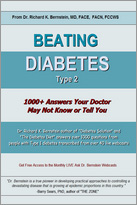July 1995
Pedioscope, 25:4
The incidence of limb-threatening ulcerations is very high, affecting about one of every seven diabetic patients. Non-healing “diabetic” ulcerations are responsible for the largest group of leg, foot and toe amputations in this country, after traumatic injuries such as motor vehicle accidents.
These ulcers and subsequent amputations are always preceded by either gradual or sudden injury to the skin by some external intrusion. By preventing such injuries, we can prevent their sad consequences.
Virtually all diabetics who have experienced ongoing higher-than-normal blood sugars for more than five years suffer some loss of sensitivity to pain, pressure, and temperature in their feet.
Furthermore, the nerves that control the shape of the foot are also injured, with resultant deformity that includes “claw” or “hammer” toes, high arch and prominent bones at the bases of the toes on the sole of the foot.
The nerves that stimulate perspiration in the feet are also affected. Damage to these nerves results in the classic dry, often cracked skin that we see on diabetic feet. Dry skin is more easily damaged and slower to heal than is normal, moist skin, and cracks permit entry of infectious bacteria.
Elevated blood sugars also impair circulation in the legs and the small blood vessels that supply the skin of the feet. In order to heal, injured skin can require 50 times the blood flow of normal skin.
If this increase in flow is unavailable, the injury will deteriorate, becoming gangrenous and facilitating an infection that spreads up the leg. This infection may not respond to antibiotics.
Blood circulation to the normal foot can readily increase 100 fold if the increase is necessary to conduct the heat of warm objects away from the skin. Impaired circulation may make this increase in circulation impossible, and the resultant burn or local gangrene may not even cause pain.
Thus, we have a deformed foot, with bony prominences that may be continually rubbed or pressed by shoes. The foot may be unable to perceive the extent of such pressure and may not heal readily if injured. It can be burned at temperatures as low as 92 degrees Fahrenheit.
The following guidelines are essential for prevention of foot injury and its potentially grave consequences.
- Never walk barefoot, either indoors or out.
- Purchase shoes or sneakers late in the day, when foot size is the greatest. Shoes must be comfortable at the first wearing and should not require “breaking in.” Request shoes with deep toe boxes.
- Feel the insides of shoes daily for foreign objects, torn lining, protruding nails or bumps. Have the shoes repaired if you find any of these conditions.
- Don’t wear sandals with thongs.
- Try to change to a different pair of shoes each day.
- Examine your feet daily for possible injury or signs of excessive pressure from soes. Be sure to check between your toes. Use a mirror or ask another person to inspect your soles, if necessary.
- If the skin of your feet is dry, lubricate the entire foot. Suitable lubricants include mink oil, olive oil, Vitamin E oil, and emulsified lanolin. Do not use petroleum jelly (Vaseline), mineral oil, or baby oil.
- Do not smoke cigarettes. Nicotine causes constriction of the small vessels that nourish the skin.
- Keep feet away from heat. Do not use heating pads, hot water bottles, or electric blankets. Do not place feet near sources of warmth such as radiators or fireplaces. Baths and showers should feel cool, not even lukewarm. Estimate temperature with your hand or a bath thermometer, not with your feet. Water temperature should be less than 92 degrees Fahrenheit.
- Do not soak your feet in water without first checking with your physician. Soaking can cause macerated skin, which breaks down easily and doesn’t heal well. When bathing or showering, get in, get washed, and get out fast. Beware of any environment that may wet your feet or your shoes.
- Do not use adhesive tape or other adhesive products like corn plasters on your feet. Fragile skin might be peeled off when the adhesive is removed.
- Do not put any medications in contact with your skin that are not prescribed by your physician. Many over-the-counter medications such as iodine, salicylic acid, and corn-removal agents are dangerous.
- If the circulation in your feet is impaired, you should not take prescription medications called “beta blockers” for hypertension or heart disease.
- Do not attempt to file down, remove, or shave calluses or corns, or permit anyone else to do it. This action is dangerous. If any calluses, corns or pink spots are present, show them to your physician.
- Do not trim your toenails if you cannot see them clearly. As a friend or relative, a podiatrist or physician to do this for you.
- Don’t wear stockings or socks with tight elastic bands, and don’t use garters. Don’t wear socks that have holes or have been darned.
- Phone your physician immediately if you experience any injury to your foot. Even a minor injury is an emergency for someone with diabetes. Procrastination can be disastrous.




